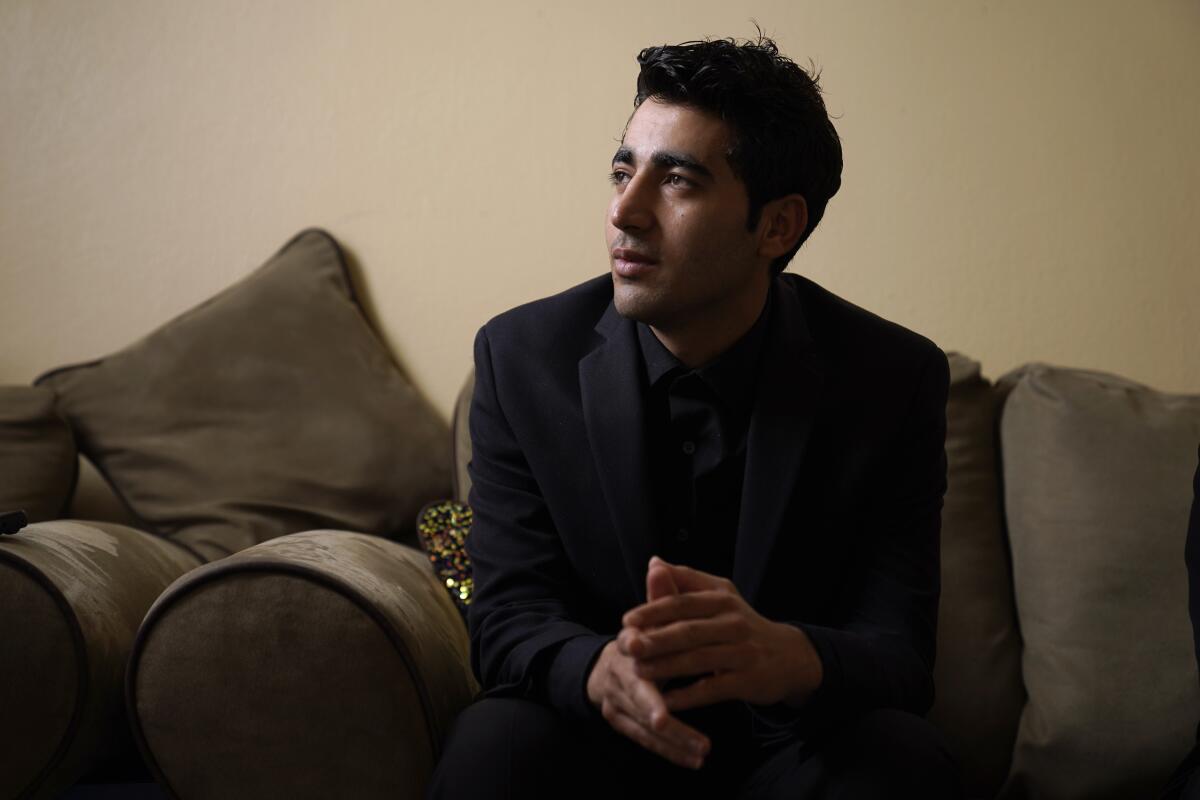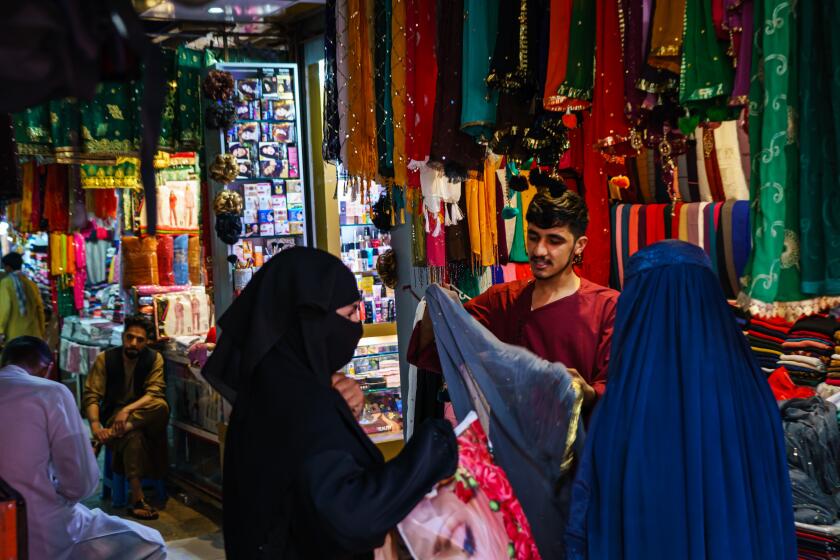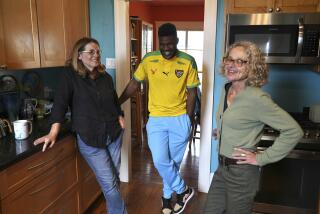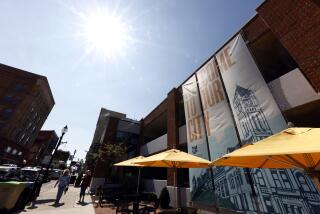St. Louis eagerly welcomes Afghan refugees

- Share via
ST. LOUIS — Inamullah Niazai sits on the front porch step of his red-brick St. Louis home and smiles at the sight of his mother and father chatting in the front yard and his two young daughters munching chocolate ice cream bars.
“Anything is possible here,” said Niazai, 23. “We are so lucky that my family can be here, together.”
They are part of an aggressive effort to lure Afghan refugees to St. Louis. About 600 have arrived and 750 more are expected later this year.
Civic leaders hope that over the next few years, thousands more will decide to relocate to the Midwestern city, helping to offset seven decades of population loss and rejuvenate urban neighborhoods, as the arrival of Bosnian refugees did three decades ago.
The burqa order confirms the worst fears of rights activists and is sure to complicate the Taliban’s dealings with the international community.
It’s been nearly nine months since the Afghan capital of Kabul was ceded to the Taliban. Since then, over 76,000 Afghan refugees have come to the U.S.; California and Texas have taken in most of them, but many will eventually relocate.
In the 1990s, St. Louis became a major destination for Bosnians displaced by war in the former Yugoslavia. Among about 300,000 who fled to the U.S., some 40,000 call the St. Louis area home.
They revitalized part of the city into what’s now often called Little Bosnia; it has Bosnian-owned markets, auto shops and other businesses. Residents have an online newspaper, a community center and their own chamber of commerce.
The Bosnians provided a population boost in a city that’s been losing people at an alarming rate, dropping from over 850,000 in 1950 to just under 300,000 today.
St. Louis’ Afghan Resettlement Initiative is backed by over $1million in donations and over 800 volunteers, with support from the Roman Catholic Archdiocese of St. Louis, the International Institute of St. Louis and other nonprofits.
Jerry Schlichter is the organizer and a major donor to the effort, which he said helps find housing and jobs, connects arrivals to training such as computer classes, and provides grants to start businesses.
“There’s a mutual need. We have been stagnant,” Schlichter said. “With this one-time opportunity with Afghan refugees ... we should take advantage of it.”
Arrey Obenson, head of the International Institute of St. Louis, is confident the new refugees will revitalize neighborhoods.
“If we look at St. Louis city and the rate the population is declining, we have to find a way to bring people into the community to turn that around,” Obenson said.
St. Louis isn’t the only city with a declining population trying to attract the refugees. Detroit reached its population apex in 1950, with 1.85 million people. Its population has since dropped by two-thirds, to about 640,000.
Corporate and community leaders have launched the Detroit Refugee Network to raise money for services such as housing, education, transportation and language training. About 250 Afghan refugees have settled in Detroit, and an additional 400 or so elsewhere in the area.
Detroit has proved the value immigrants can bring, said Steve Tobocman, executive director of Global Detroit. He and Alan Mallach, a senior fellow with the Center for Community Progress, studied two Detroit neighborhoods filled with immigrants from Bangladesh, Yemen, Mexico, and Central and South America. Both neighborhoods have grown by nearly 50% in the last two decades or so.
The result is less crime, over 100 new businesses and reductions in home vacancies and tax foreclosures, the study found. Residents surveyed were more satisfied and optimistic than Detroit residents as a whole.
“Depopulation is what really cycles these neighborhoods into some pretty dire circumstances,” Tobocman said. “The vacancy, the lack of retail opportunity, the lack of jobs. Just stabilizing the population or ... regrowing the population can reverse that course.”
Niazai, his wife and their daughters fled Kabul last year. They chose to go to St. Louis because other relatives were already here.
The initiative helped find them a place to rent on a quiet street that now is home to 11 family members. Volunteers provided furniture, food and what Niazai called “welcome money.” Someone even gave him a car.
Niazai said he feels at home in St. Louis.
“We will stay,” he said. “My future is good here.”
More to Read
Sign up for Essential California
The most important California stories and recommendations in your inbox every morning.
You may occasionally receive promotional content from the Los Angeles Times.











